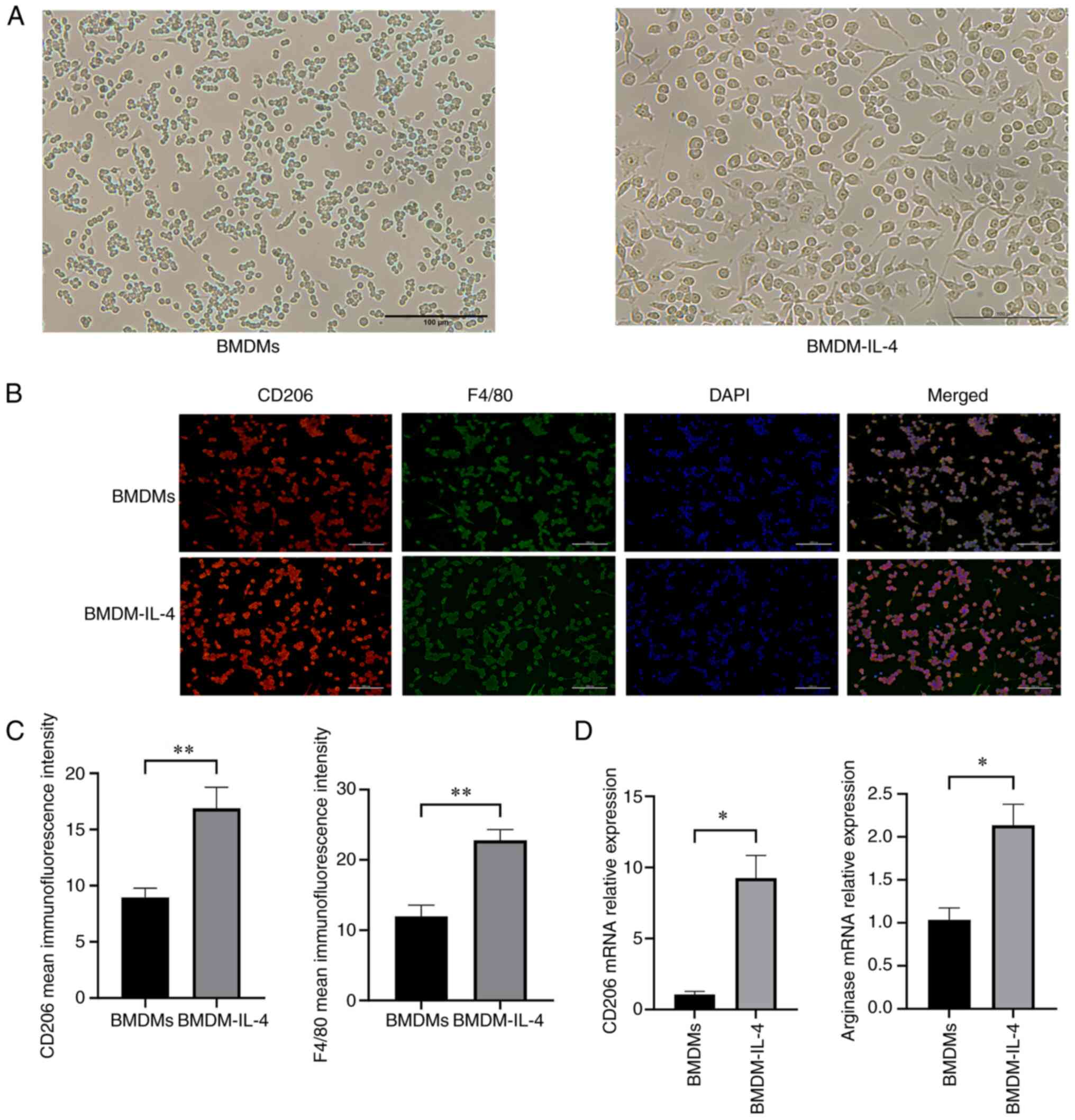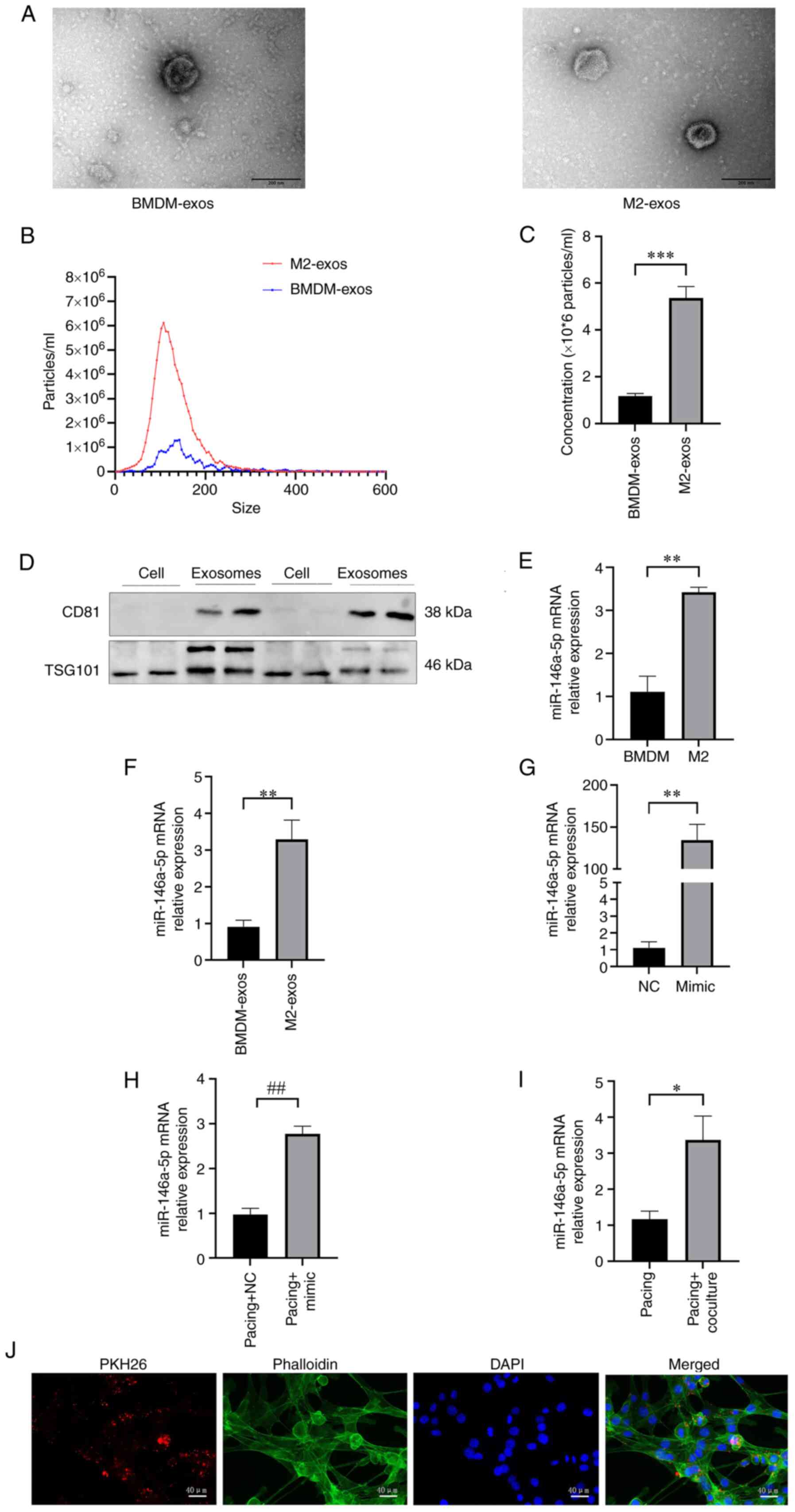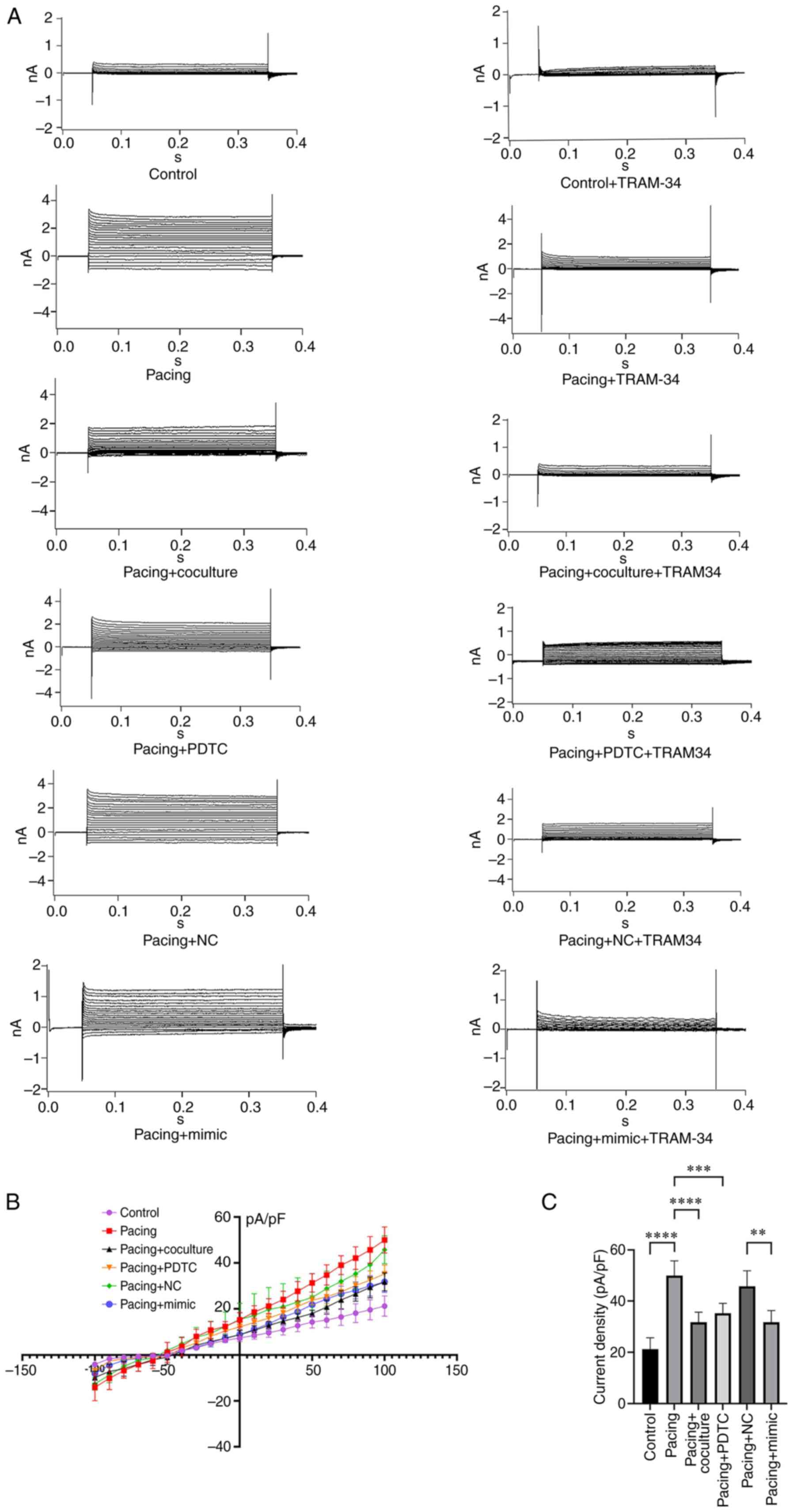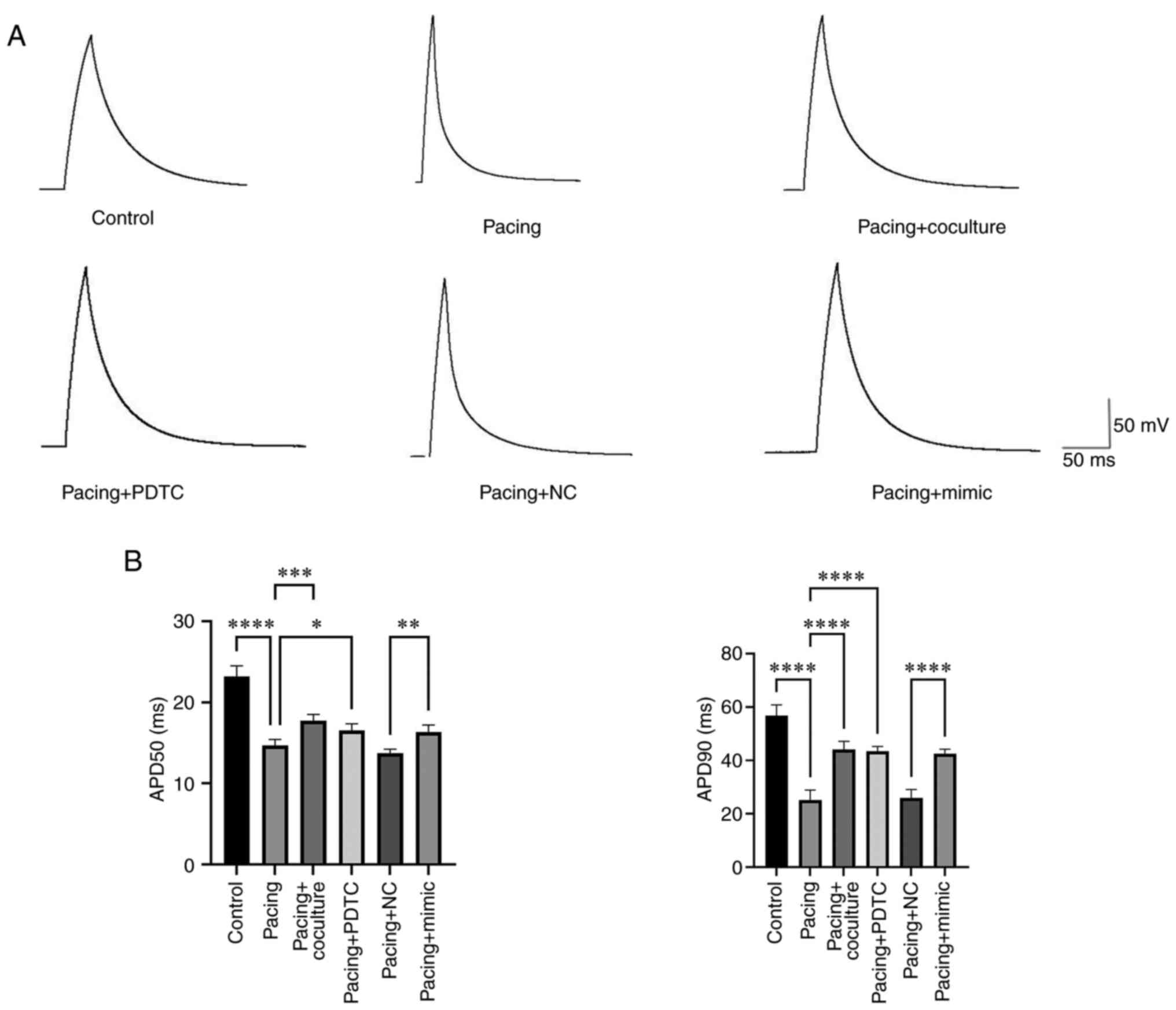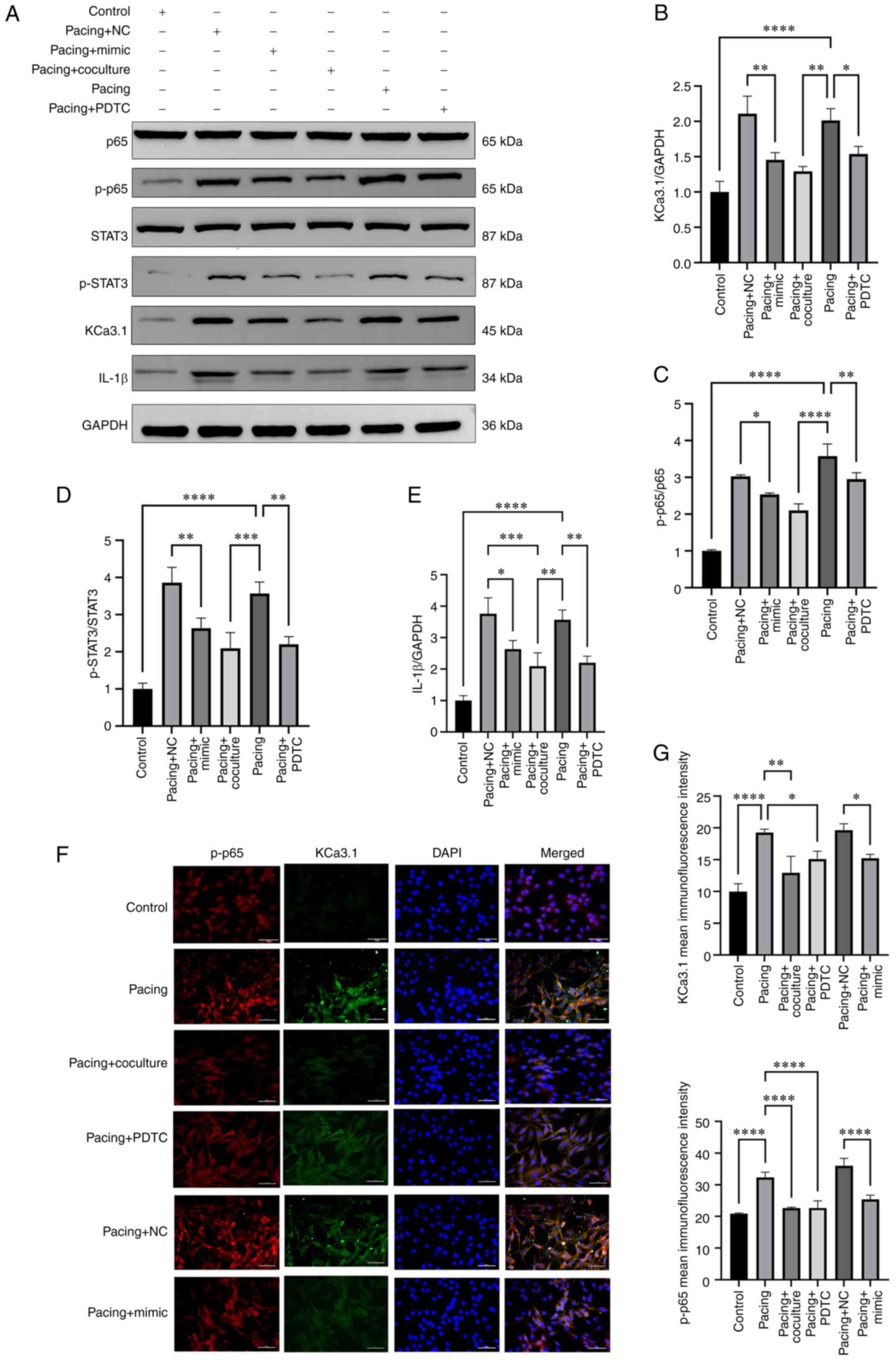|
1
|
Hua T, Yang M, Song H, Kong E, Deng M, Li
Y, Li J, Liu Z, Fu H, Wang Y and Yuan H: Huc-MSCs-derived exosomes
attenuate inflammatory pain by regulating microglia pyroptosis and
autophagy via the miR-146a-5p/TRAF6 axis. J Nanobiotechnology.
20:3242022. View Article : Google Scholar : PubMed/NCBI
|
|
2
|
Yuan Y, Mei Z, Qu Z, Li G, Yu S, Liu Y,
Liu K, Shen Z, Pu J, Wang Y, et al: Exosomes secreted from
cardiomyocytes suppress the sensitivity of tumor ferroptosis in
ischemic heart failure. Signal Transduct Target Ther. 8:1212023.
View Article : Google Scholar : PubMed/NCBI
|
|
3
|
Lin YN, Mesquita T, Sanchez L, Chen YH,
Liu W, Li C, Rogers R, Wang Y, Li X, Wu D, et al: Extracellular
vesicles from immortalized cardiosphere-derived cells attenuate
arrhythmogenic cardiomyopathy in desmoglein-2 mutant mice. Eur
Heart J. 42:3558–3571. 2021. View Article : Google Scholar : PubMed/NCBI
|
|
4
|
Sagris M, Vardas EP, Theofilis P,
Antonopoulos AS, Oikonomou E and Tousoulis D: Atrial fibrillation:
Pathogenesis, predisposing factors, and genetics. Int J Mol Sci.
23:62021. View Article : Google Scholar : PubMed/NCBI
|
|
5
|
Pegtel DM and Gould SJ: Exosomes. Annu Rev
Biochem. 88:487–514. 2019. View Article : Google Scholar : PubMed/NCBI
|
|
6
|
Chen P, Wang L, Fan X, Ning X, Yu B, Ou C
and Chen M: Targeted delivery of extracellular vesicles in heart
injury. Theranostics. 11:2263–2277. 2021. View Article : Google Scholar : PubMed/NCBI
|
|
7
|
Shaihov-Teper O, Ram E, Ballan N,
Brzezinski RY, Naftali-Shani N, Masoud R, Ziv T, Lewis N, Schary Y,
Levin-Kotler LP, et al: Extracellular vesicles from epicardial fat
facilitate atrial fibrillation. Circulation. 143:2475–2493. 2021.
View Article : Google Scholar : PubMed/NCBI
|
|
8
|
Zhang Z, Xu Y, Cao C, Wang B, Guo J, Qin
Z, Lu Y, Zhang J, Zhang L, Wang W, et al: Exosomes as a messager to
regulate the crosstalk between macrophages and cardiomyocytes under
hypoxia conditions. J Cell Mol Med. 26:1486–1500. 2022. View Article : Google Scholar : PubMed/NCBI
|
|
9
|
Yao Y, He S, Wang Y, Cao Z, Liu D, Fu Y,
Chen H, Wang X and Zhao Q: Blockade of exosome release suppresses
atrial fibrillation by alleviating atrial fibrosis in canines with
prolonged atrial pacing. Front Cardiovasc Med. 8:6991752021.
View Article : Google Scholar : PubMed/NCBI
|
|
10
|
He S, Wang Y, Yao Y, Cao Z, Yin J, Zi L,
Chen H, Fu Y, Wang X and Zhao Q: Inhibition of KCa3.1 channels
suppresses atrial fibrillation via the attenuation of macrophage
pro-inflammatory polarization in a canine model with prolonged
rapid atrial pacing. Front Cardiovasc Med. 8:6566312021. View Article : Google Scholar : PubMed/NCBI
|
|
11
|
Sun Z, Ying X, Zhao W, He Y, Wang Z, Zheng
L, Chen W and Xu H: M2c macrophages prevent atrial fibrillation in
association with the inhibition of KCNQ1 in human embryonic stem
cell-derived atrial-like cardiomyocytes. Hellenic J Cardiol.
62:457–459. 2021. View Article : Google Scholar : PubMed/NCBI
|
|
12
|
Théry C, Witwer KW, Aikawa E, Alcaraz MJ,
Anderson JD, Andriantsitohaina R, Antoniou A, Arab T, Archer F,
Atkin-Smith GK, et al: Minimal information for studies of
extracellular vesicles 2018 (MISEV2018): A position statement of
the International Society for Extracellular Vesicles and update of
the MISEV2014 guidelines. J Extracell Vesicles. 7:15357502018.
View Article : Google Scholar : PubMed/NCBI
|
|
13
|
Liu D, Yang M, Yao Y, He S, Wang Y, Cao Z,
Chen H, Fu Y, Liu H and Zhao Q: Cardiac fibroblasts promote
ferroptosis in atrial fibrillation by secreting Exo-miR-23a-3p
Targeting SLC7A11. Oxid Med Cell Longev.
2022:39614952022.PubMed/NCBI
|
|
14
|
Livak KJ and Schmittgen TD: Analysis of
relative gene expression data using real-time quantitative PCR and
the 2(-Delta Delta C(T)) Method. Methods. 25:402–408. 2001.
View Article : Google Scholar : PubMed/NCBI
|
|
15
|
Odell ID and Cook D: Immunofluorescence
techniques. J Invest Dermatol. 133:e42013. View Article : Google Scholar : PubMed/NCBI
|
|
16
|
Al-Owais MM, Hettiarachchi NT, Dallas ML,
Scragg JL, Lippiat JD, Holden AV, Steele DS and Peers C: Inhibition
of the voltage-gated potassium channel Kv1.5 by hydrogen sulfide
attenuates remodeling through S-nitrosylation-mediated signaling.
Commun Biol. 6:6512023. View Article : Google Scholar : PubMed/NCBI
|
|
17
|
Yang Z, Shen W, Rottman JN, Wikswo JP and
Murray KT: Rapid stimulation causes electrical remodeling in
cultured atrial myocytes. J Mol Cell Cardiol. 38:299–308. 2005.
View Article : Google Scholar : PubMed/NCBI
|
|
18
|
Brundel BJ, Kampinga HH and Henning RH:
Calpain inhibition prevents pacing-induced cellular remodeling in a
HL-1 myocyte model for atrial fibrillation. Cardiovasc Res.
62:521–528. 2004. View Article : Google Scholar : PubMed/NCBI
|
|
19
|
Weisbrod D, Khun SH, Bueno H, Peretz A and
Attali B: Mechanisms underlying the cardiac pacemaker: The role of
SK4 calcium-activated potassium channels. Acta Pharmacologica
Sinica. 37:82–97. 2016. View Article : Google Scholar : PubMed/NCBI
|
|
20
|
Liebau S, Tischendorf M, Ansorge D, Linta
L, Stockmann M, Weidgang C, Iacovino M, Boeckers T, von Wichert G,
Kyba M and Kleger A: An inducible expression system of the
calcium-activated potassium channel 4 to study the differential
impact on embryonic stem cells. Stem Cells Int. 2011:4568152011.
View Article : Google Scholar : PubMed/NCBI
|
|
21
|
Weisbrod D, Peretz A, Ziskind A, Menaker
N, Oz S, Barad L, Eliyahu S, Itskovitz-Eldor J, Dascal N,
Khananshvili D, et al: SK4 Ca2+ activated K+ channel is
a critical player in cardiac pacemaker derived from human embryonic
stem cells. Proc Natl Acad Sci USA. 110:E1685–E1694. 2013.
View Article : Google Scholar : PubMed/NCBI
|
|
22
|
Haron-Khun S, Weisbrod D, Bueno H, Yadin
D, Behar J, Peretz A, Binah O, Hochhauser E, Eldar M, Yaniv Y, et
al: SK4 K channels are therapeutic targets for the treatment of
cardiac arrhythmias. EMBO Mol Med. 9:415–429. 2017. View Article : Google Scholar : PubMed/NCBI
|
|
23
|
Yang M, Wang Y, Zhao H, Yin J, Zi L, Wang
X, Tang Y, Huang C and Zhao Q: Role of intermediate-conductance
calcium-activated potassium channels in atrial fibrillation in
canines with rapid atrial pacing. J Interv Card Electrophysiol.
60:247–253. 2021. View Article : Google Scholar : PubMed/NCBI
|
|
24
|
Davidson SM, Boulanger CM, Aikawa E,
Badimon L, Barile L, Binder CJ, Brisson A, Buzas E, Emanueli C,
Jansen F, et al: Methods for the identification and
characterization of extracellular vesicles in cardiovascular
studies: From exosomes to microvesicles. Cardiovasc Res. 119:45–63.
2023. View Article : Google Scholar : PubMed/NCBI
|
|
25
|
Hirai K, Ousaka D, Fukushima Y, Kondo M,
Eitoku T, Shigemitsu Y, Hara M, Baba K, Iwasaki T, Kasahara S, et
al: Cardiosphere-derived exosomal microRNAs for myocardial repair
in pediatric dilated cardiomyopathy. Sci Transl Med.
12:eabb33362020. View Article : Google Scholar : PubMed/NCBI
|
|
26
|
Dong M, Chen D, Zhu Y, Yang S, Kumar S,
Zhang R, Zhou Y, Yang Z, Zheng N, Zhu T, et al: Impaired regulation
of MMP2/16-MLCK3 by miR-146a-5p increased susceptibility to
myocardial ischaemic injury in aging mice. Cardiovasc Res.
119:786–801. 2023. View Article : Google Scholar : PubMed/NCBI
|
|
27
|
Rivera-Caravaca JM, Teruel-Montoya R,
Roldán V, Cifuentes-Riquelme R, Crespo-Matas JA, de Los
Reyes-García AM, Águila S, Fernández-Pérez MP, Reguilón-Gallego L,
Zapata-Martínez L, et al: Pilot study on the role of circulating
miRNAs for the improvement of the predictive ability of the 2MACE
score in patients with atrial fibrillation. J Clin Med. 9:36452020.
View Article : Google Scholar : PubMed/NCBI
|
|
28
|
Zhang QB, Qing YF, Yin CC, Zhou L, Liu XS,
Mi QS and Zhou JG: Mice with miR-146a deficiency develop severe
gouty arthritis via dysregulation of TRAF 6, IRAK 1 and NALP3
inflammasome. Arthritis Res Ther. 20:452018. View Article : Google Scholar : PubMed/NCBI
|
|
29
|
Pan J, Du M, Cao Z, Zhang C, Hao Y, Zhu J
and He H: miR-146a-5p attenuates IL-1β-induced IL-6 and IL-1β
expression in a cementoblast-derived cell line. Oral Dis.
26:1308–1317. 2020. View Article : Google Scholar : PubMed/NCBI
|
|
30
|
Su YL, Wang X, Mann M, Adamus TP, Wang D,
Moreira DF, Zhang Z, Ouyang C, He X, Zhang B, et al: Myeloid
cell-targeted miR-146a mimic inhibits NF-κB-driven inflammation and
leukemia progression in vivo. Blood. 135:167–180. 2020. View Article : Google Scholar : PubMed/NCBI
|
|
31
|
Meng Q, Liang C, Hua J, Zhang B, Liu J,
Zhang Y, Wei M, Yu X, Xu J and Shi S: A miR-146a-5p/TRAF6/NF-kB p65
axis regulates pancreatic cancer chemoresistance: Functional
validation and clinical significance. Theranostics. 10:3967–3979.
2020. View Article : Google Scholar : PubMed/NCBI
|
|
32
|
Sun W, Ma J, Zhao H, Xiao C, Zhong H, Ling
H, Xie Z, Tian Q, Chen H, Zhang T, et al: Resolvin D1 suppresses
pannus formation via decreasing connective tissue growth factor
caused by upregulation of miRNA-146a-5p in rheumatoid arthritis.
Arthritis Res Ther. 22:612020. View Article : Google Scholar : PubMed/NCBI
|
|
33
|
Zhang L, Wei X, Wang Z, Liu P, Hou Y, Xu
Y, Su H, Koci MD, Yin H and Zhang C: NF-κB activation enhances
STING signaling by altering microtubule-mediated STING trafficking.
Cell Rep. 42:1121852023. View Article : Google Scholar : PubMed/NCBI
|
|
34
|
Liu X, Zhang W, Luo J, Shi W, Zhang X, Li
Z, Qin X, Liu B and Wei Y: TRIM21 deficiency protects against
atrial inflammation and remodeling post myocardial infarction by
attenuating oxidative stress. Redox Biol. 62:1026792023. View Article : Google Scholar : PubMed/NCBI
|
|
35
|
Liu Y, Wu F, Wu Y, Elliott M, Zhou W, Deng
Y, Ren D and Zhao H: Mechanism of IL-6-related spontaneous atrial
fibrillation after coronary artery grafting surgery: IL-6 knockout
mouse study and human observation. Transl Res. 233:16–31. 2021.
View Article : Google Scholar : PubMed/NCBI
|
|
36
|
Ye T, Zhang C, Wu G, Wan W, Liang J, Liu
X, Liu D and Yang B: Pinocembrin attenuates autonomic dysfunction
and atrial fibrillation susceptibility via inhibition of the
NF-κB/TNF-α pathway in a rat model of myocardial infarction. Int
Immunopharmacol. 77:1059262019. View Article : Google Scholar : PubMed/NCBI
|
|
37
|
Xu H, Lai W, Zhang Y, Liu L, Luo X, Zeng
Y, Wu H, Lan Q and Chu Z: Tumor-associated macrophage-derived IL-6
and IL-8 enhance invasive activity of LoVo cells induced by PRL-3
in a KCNN4 channel-dependent manner. BMC Cancer. 14:3302014.
View Article : Google Scholar : PubMed/NCBI
|
|
38
|
Zheng F, Tao Y, Liu J, Geng Z, Wang Y,
Wang Y, Fu S, Wang W, Xie C, Zhang Y and Gong F: KCa3.1 inhibition
of macrophages suppresses inflammatory response leading to
endothelial damage in a cell model of kawasaki disease. J Inflamm
Res. 14:719–735. 2021. View Article : Google Scholar : PubMed/NCBI
|
|
39
|
Jiang XX, Bian W, Zhu YR, Wang Z, Ye P, Gu
Y, Zhang H, Zuo G, Li X, Zhu L, et al: Targeting the KCa3.1 channel
suppresses diabetes-associated atherosclerosis via the STAT3/CD36
axis. Diabetes Res Clin Pract. 185:1097762022. View Article : Google Scholar : PubMed/NCBI
|
|
40
|
McFarland BC, Hong SW, Rajbhandari R,
Twitty GB Jr, Gray GK, Yu H, Benveniste EN and Nozell SE:
NF-κB-induced IL-6 ensures STAT3 activation and tumor
aggressiveness in glioblastoma. PLoS One. 8:e787282013. View Article : Google Scholar : PubMed/NCBI
|
|
41
|
Cogswell JP, Godlevski MM, Wisely GB, Clay
WC, Leesnitzer LM, Ways JP and Gray JG: NF-kappa B regulates IL-1
beta transcription through a consensus NF-kappa B binding site and
a nonconsensus CRE-like site. J Immunol. 153:712–723. 1994.
View Article : Google Scholar : PubMed/NCBI
|



